Jared Keller, a researcher and former Science Museum Explainer, discusses some of our hidden objects and the science behind them.
Today we’re looking at the Sound Section of Launchpad and one of my favourite exhibits, “Sound Bite”. If you’re a bit rusty on your Sound Bite science, there is an old BBC refresher course on the principles of sound travelling through a medium/solid.
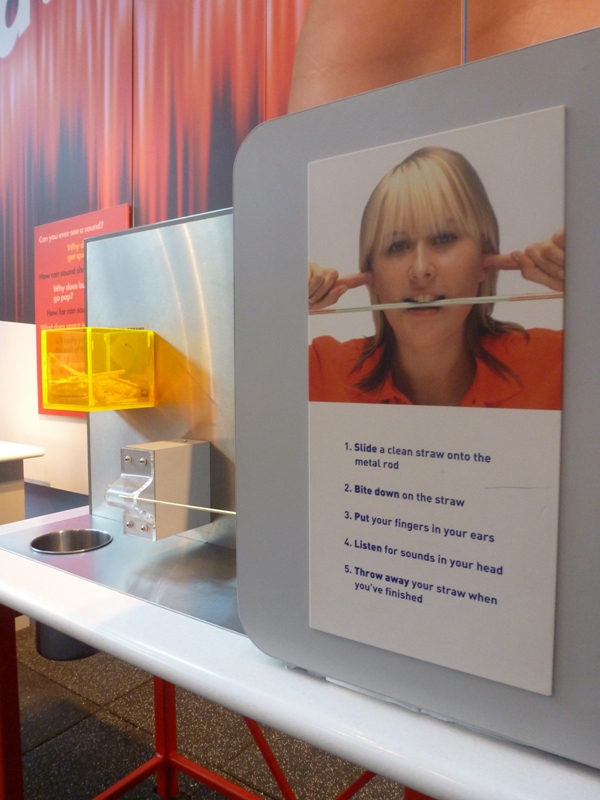
The important thing to remember is that sound waves can travel through a solid material like a metal rod the same as they can through the air. Proof of this lies in the fact that you can feel the rod vibrating if you pinch it with your fingers. When you bite down, those vibrations are passed up through your teeth, through your jaw, and up into your ear where they vibrate the same bones in the inner-ear that normally vibrate from sound waves in the air.
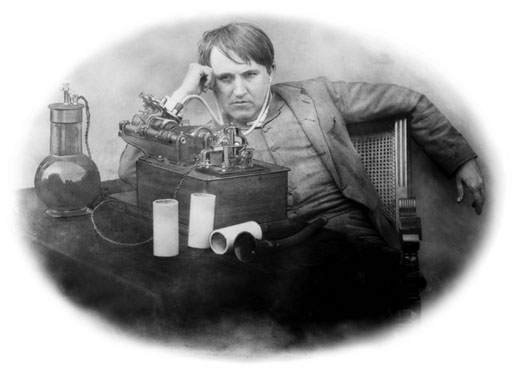
In 1877 a very ‘bright’ man named Thomas Alva Edison put this principle to use in what he called a phonograph. Whereas the more familiar gramaphone ‘records’ are flat two-sided discs of vinyl, Edison’s original phonographs used 10 cm cylinders made of soft tin-foil (and later wax).
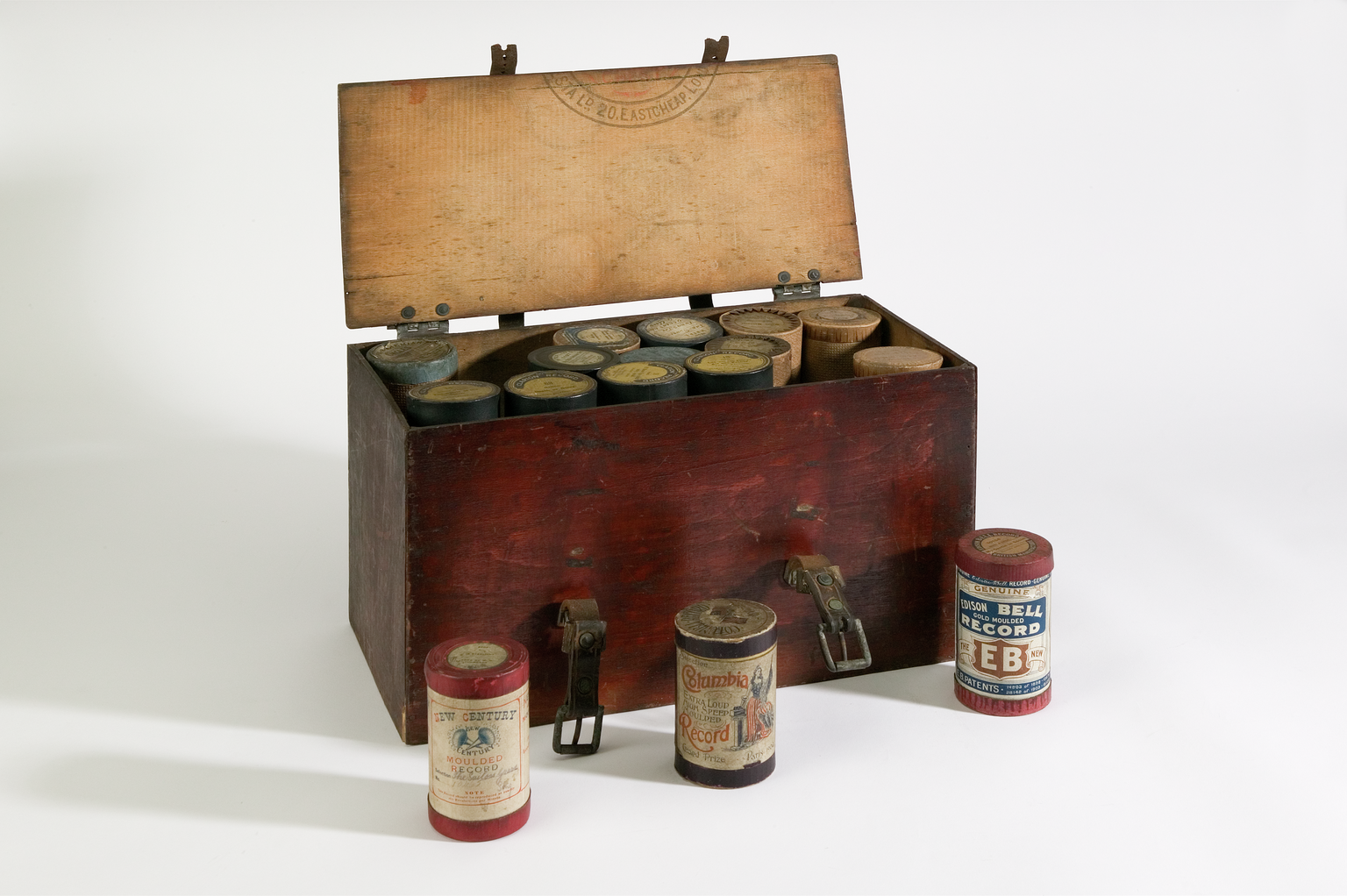
Whatever you call them, the science is simple: he knew, just like you, that sound travelling through a metal causes it to vibrate. His great insight, was in realising that vibrations in a metal could then be turned back into vibrations in the air – what we normally hear as sounds!
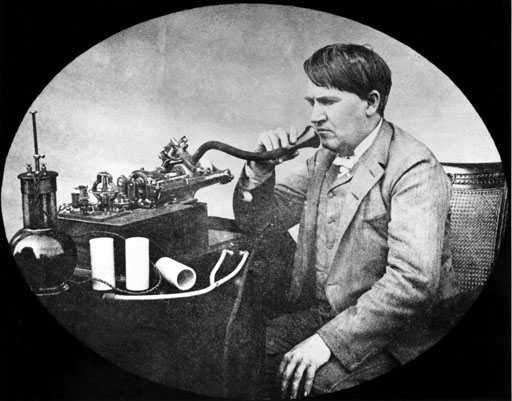
In the drawing above you can see Edison speaking into one of his phonographs. As he spoke into the cone and tube, it captured his voice and funneled it down until it was intense enough to vibrate a small, incredibly sharp piece of metal. As the metal vibrated with the sound of his voice, the soft tin cylinder was rotated underneath the vibrating tip which caused the tip to cut into the tin. If you want to see a real phonograph player and its cylindrical record, simply head to the ‘Secret Life of the Home’ gallery in the basement.
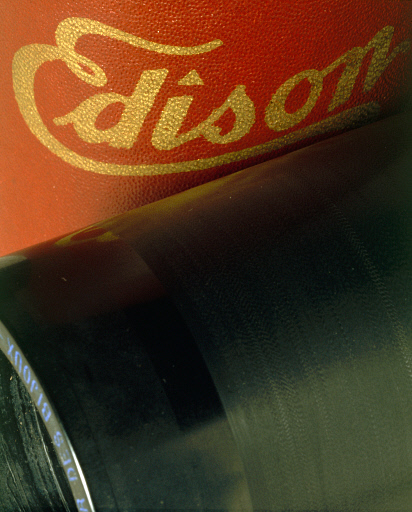
Edison knew that once the vibration of his voice had been carved into the soft tin, passing another tip through those grooves in the now hardened tin would make the needle vibrate in exactly the same way! All he had to do then was take those vibrations and amplify them so they were loud enough to be heard by the human ear. But being the veteran Sound Biters that we are, we know that if Edison had simply attached small metal rods to that vibrating tip we could bite down on them and let the vibrations pass up our teeth, through our jaws, and up to our ears, just like with Sound Bite!
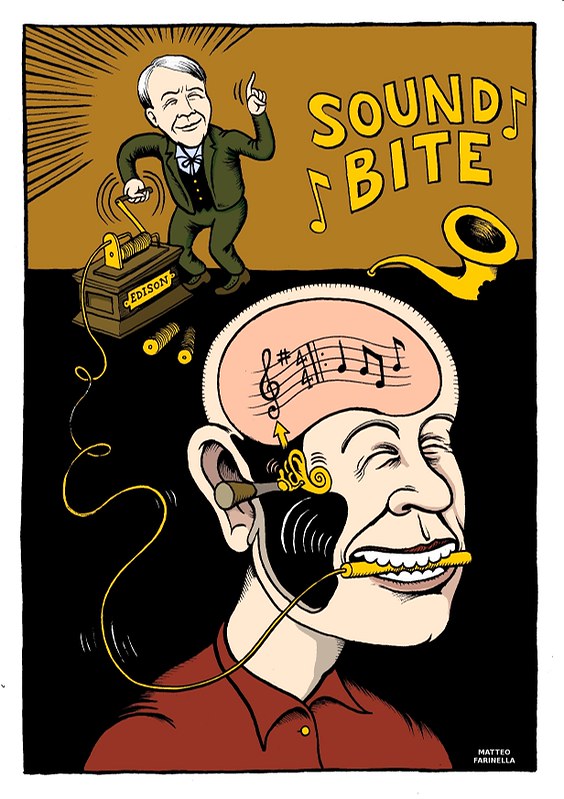
Though maybe Edison was right: listening to a song through the air is much more satisfying than biting down on a metal rod!